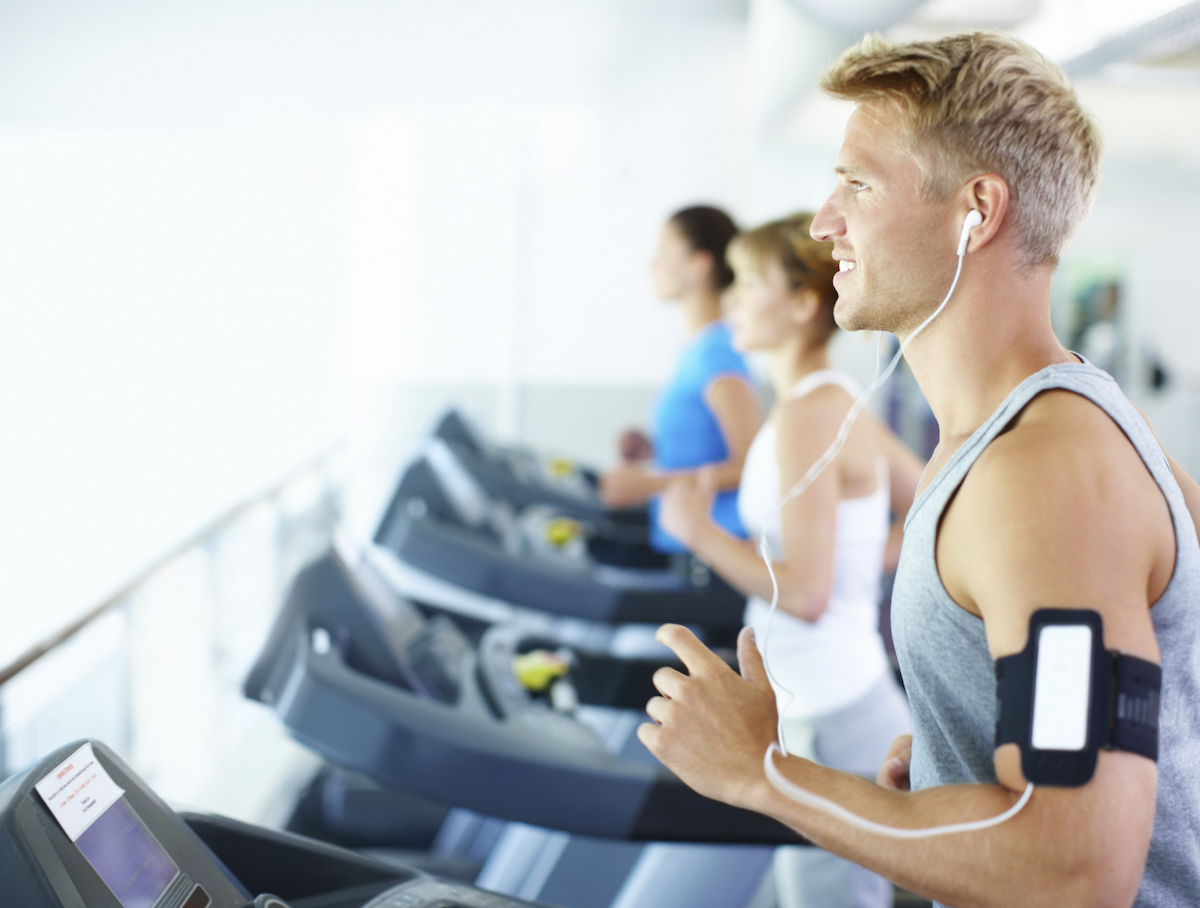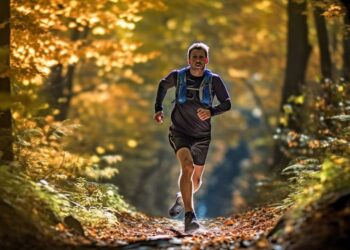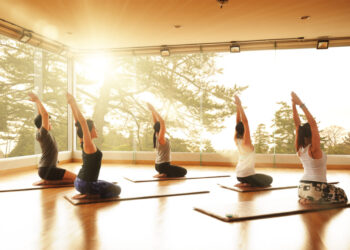The world is undeniably in motion. What was once a niche pursuit for athletes and enthusiasts has blossomed into a global fitness craze, transforming lifestyles, industries, and even urban landscapes. This isn’t just about looking good; it’s a profound societal shift towards better health, increased longevity, and enhanced well-being. From bustling city gyms to serene yoga studios, from high-octane CrossFit boxes to solitary long-distance runs, the pursuit of physical excellence has become a universal language. This expansive article delves into the myriad facets of this phenomenon, exploring its driving forces, diverse manifestations, and the profound impact it has on individuals and communities across the globe.
Why Fitness is Booming

Several interwoven factors contribute to the unprecedented rise of global fitness. It’s a complex tapestry of technological advancement, shifting societal values, and a growing awareness of health.
A. Health and Wellness Consciousness
There’s an undeniable surge in health consciousness. People are more aware than ever of the long-term implications of sedentary lifestyles and poor dietary habits. The prevalence of chronic diseases like obesity, diabetes, and heart disease has spurred a proactive approach to health. This heightened awareness is largely driven by:
A. Accessible Information: The internet and social media have democratized health information. While some information can be misleading, the sheer volume of credible articles, research findings, and expert advice has empowered individuals to take charge of their well-being. People can easily research the benefits of exercise, specific training methodologies, and nutritional guidelines.
B. Preventative Healthcare Focus: There’s a growing understanding that prevention is better than cure. Investing time and effort into fitness is increasingly viewed as a crucial preventative measure against future health complications, potentially reducing healthcare costs and improving quality of life in later years. This shift encourages individuals to adopt healthier habits earlier in life.
C. Longevity and Quality of Life: People aren’t just aiming to live longer; they want to live better. Fitness is seen as a key component for maintaining mobility, cognitive function, and independence well into old age. The desire to actively enjoy retirement years, travel, and remain engaged with hobbies fuels a commitment to physical activity throughout life.
B. The Influence of Social Media and Digital Platforms
Social media has been a monumental catalyst, turning fitness into a highly visible and often aspirational pursuit.
A. Fitness Influencers: Individuals showcasing their fitness journeys, workouts, and physiques have amassed enormous followings. These influencers inspire millions, offering workout routines, meal plans, and motivational content. While positive for inspiration, it also creates pressure and can lead to unrealistic body image expectations.
B. Community Building: Online platforms, fitness apps, and virtual challenges foster communities of like-minded individuals. This sense of belonging, shared goals, and mutual support can be a powerful motivator, breaking down geographical barriers and creating global networks of fitness enthusiasts. Think of global running challenges or virtual cycling events.
C. Gamification and Tracking: Fitness apps and wearables have introduced elements of gamification – leaderboards, badges, challenges – making exercise more engaging. The ability to track progress, calories burned, steps taken, and sleep patterns provides tangible feedback, reinforcing positive habits and motivating continued effort. This data-driven approach appeals to many, turning fitness into a quantifiable pursuit.
C. Economic Accessibility and Diversification
Fitness is no longer exclusively for the affluent. The market has diversified, offering options across various price points and preferences.
A. Budget-Friendly Options: Public parks, free online workouts, calisthenics, and community sports leagues offer accessible ways to stay active without significant financial investment. This broadens the appeal of fitness to a wider demographic.
B. Specialized Niche Markets: Conversely, there are also high-end, specialized studios catering to specific interests like boutique cycling, advanced yoga, or personalized strength training. This segmentation ensures that there’s a fitness solution for almost every taste and budget, from luxury experiences to grassroots initiatives.
C. Corporate Wellness Programs: Many companies are investing in employee wellness, offering gym memberships, on-site fitness classes, and health incentives. This recognizes that a healthy workforce is a productive workforce, further integrating fitness into daily life.
The Spectrum of Physical Activity
The global fitness craze isn’t monolithic; it’s a vibrant tapestry of diverse activities, each appealing to different preferences and goals.
A. Traditional Gyms and Strength Training
The classic gym remains a cornerstone of the fitness world, with an ever-evolving array of equipment and training philosophies. Strength training, once largely associated with bodybuilders, is now widely recognized for its benefits in building muscle, burning fat, improving bone density, and enhancing overall functional strength for people of all ages.
A. Weightlifting and Powerlifting: Focus on maximal strength and specific lifts like squats, deadlifts, and bench presses, attracting a dedicated community. These disciplines highlight raw power and technical precision.
B. Bodybuilding and Hypertrophy Training: Aimed at muscle growth and aesthetic development, often involving higher repetitions and specific isolation exercises. This approach emphasizes sculpting the physique.
C. Functional Training: Emphasizes movements that mimic real-life activities, improving balance, coordination, and overall functional strength for daily tasks and injury prevention. This often incorporates tools like kettlebells, resistance bands, and bodyweight exercises.
B. Group Fitness Classes: Community and Motivation
Group settings provide motivation, structure, and a sense of camaraderie that many find invaluable.
A. High-Intensity Interval Training (HIIT): Short bursts of intense exercise followed by brief recovery periods, highly effective for cardiovascular fitness and fat burning. Classes like Tabata or circuit training fall under this umbrella.
B. Yoga and Pilates: Focus on flexibility, core strength, balance, and mindfulness. These practices appeal to those seeking a holistic approach to fitness, blending physical challenge with mental serenity. They often attract individuals looking for low-impact but effective workouts.
C. Dance Fitness: Classes like Zumba, aerobics, and even specific dance styles offer a fun, energetic way to improve cardiovascular health, coordination, and rhythm. They turn exercise into an enjoyable social activity.
D. Spin/Cycling Classes: Indoor cycling sessions often feature high-energy music, motivating instructors, and a challenging workout that appeals to many for its cardiovascular benefits and intense group dynamic.
C. Outdoor and Adventure Fitness
Embracing nature for exercise has seen a significant resurgence, offering mental as well as physical benefits.
A. Running and Trail Running: From urban marathons to rugged mountain trails, running remains a fundamental and accessible form of exercise, offering freedom and a deep connection with the environment.
B. Hiking and Trekking: Exploring natural landscapes provides a full-body workout while offering stress relief and a sense of adventure. This appeals to those who enjoy sustained physical activity combined with scenic beauty.
C. Outdoor Sports: Cycling, swimming (open water), rock climbing, kayaking, and paddleboarding offer engaging ways to stay fit while enjoying the elements. These activities often foster a strong sense of community and connection with nature.
D. Niche and Specialized Fitness Trends
The industry constantly innovates, introducing new and specialized forms of exercise.
A. CrossFit: A high-intensity strength and conditioning program involving varied functional movements performed at high intensity, fostering a strong community. It combines elements of weightlifting, gymnastics, and metabolic conditioning.
B. Martial Arts and Combat Sports: Disciplines like boxing, Muay Thai, Brazilian Jiu-Jitsu, and Krav Maga offer full-body workouts, self-defense skills, discipline, and mental fortitude. They appeal to those seeking a challenging physical and mental outlet.
C. Calisthenics and Bodyweight Training: Utilizing one’s own body weight for resistance, these methods build strength, flexibility, and control, often performed outdoors or with minimal equipment. Examples include pull-ups, push-ups, and handstands.
Beyond the Physical
The fitness craze extends beyond muscle and cardiovascular health, encompassing a broader view of well-being.
A. Mental Health Benefits
Exercise is a powerful antidote to stress, anxiety, and depression. Physical activity releases endorphins, improves sleep patterns, and provides an outlet for mental tension. The discipline and routine of fitness can also provide a sense of purpose and accomplishment, boosting self-esteem.
B. Nutritional Integration
The understanding that fitness is only half the equation has led to a greater emphasis on nutrition. The global fitness craze has sparked interest in:
A. Mindful Eating: Paying attention to hunger cues, food choices, and the experience of eating, promoting a healthier relationship with food.
B. Plant-Based Diets: A growing number of fitness enthusiasts are adopting vegetarian or vegan diets for health, ethical, and environmental reasons, seeing them as optimal for recovery and performance.
C. Personalized Nutrition: Advances in nutritional science and technology are leading to more tailored dietary recommendations based on individual needs, genetics, and activity levels.
C. Recovery and Regeneration Emphasis
Recognizing that rest is as important as exertion, the fitness industry has seen a boom in recovery-focused products and services.
A. Sleep Optimization: Wearable tech and apps help track and improve sleep quality, acknowledging its critical role in muscle repair and mental restoration.
B. Massage and Myofascial Release: Tools like foam rollers, massage guns, and professional massages are widely used to alleviate muscle soreness, improve flexibility, and enhance blood flow.
C. Hydrotherapy and Cryotherapy: Ice baths, contrast showers, and cold plunges are popular methods for reducing inflammation and accelerating recovery, particularly after intense workouts.
The Economic Engine

The global fitness craze is a powerful economic force, driving innovation and creating vast opportunities.
A. Equipment and Apparel
The demand for high-performance activewear, specialized footwear, home gym equipment, and advanced fitness machines continues to grow exponentially. This segment thrives on both technological innovation and fashion trends, with consumers willing to invest in gear that enhances their comfort and performance.
B. Health and Fitness Technology
Wearable devices, smart scales, fitness apps, virtual reality (VR) workouts, and AI-powered personal trainers represent a booming tech sub-sector. These innovations provide data, personalized coaching, and interactive experiences that keep users engaged and motivated.
C. Supplement and Nutrition Market
From protein powders and pre-workouts to vitamins and meal replacements, the supplement industry caters to fitness enthusiasts seeking to optimize their performance, recovery, and nutritional intake. This market is highly competitive and requires careful regulation due to the potential for misleading claims.
D. Coaching, Training, and Services
The demand for qualified personal trainers, certified strength and conditioning coaches, sports nutritionists, and physical therapists is soaring. Boutique studios, online coaching platforms, and wellness retreats also represent significant service-based sectors within the fitness economy.
Challenges and the Future Outlook
While the global fitness craze is overwhelmingly positive, it’s not without its challenges and future directions.
A. Addressing Body Image Issues
The pervasive presence of idealized physiques on social media can contribute to unrealistic body image expectations, leading to self-esteem issues and unhealthy behaviors. Promoting body positivity and emphasizing health over aesthetics is a crucial ongoing effort within the industry.
B. Information Overload and Misinformation
With so much information available, discerning credible advice from fads and misinformation can be challenging. The need for evidence-based guidance from qualified professionals is more critical than ever.
C. Ensuring Inclusivity and Accessibility
While progress has been made, ensuring that fitness remains accessible and inclusive for all demographics – regardless of age, ability, socioeconomic status, or geographical location – is an ongoing challenge. Initiatives like adaptive fitness programs and community-based health interventions are vital.
D. Personalization and AI Integration
The future of fitness will likely see even greater personalization. AI and machine learning will enable hyper-customized workout plans, nutritional advice, and injury prevention strategies based on individual biometric data, genetic predispositions, and real-time performance. This could lead to unprecedented levels of efficiency and effectiveness in training.
E. Hybrid Models: Blending Digital and Physical
The pandemic accelerated the adoption of hybrid fitness models, combining in-person training with virtual classes and online coaching. This flexibility is likely to persist, offering consumers more options and convenience. The gym experience will likely evolve to seamlessly integrate digital tools and remote coaching.
Conclusion
The global fitness craze is more than a fleeting trend; it’s a fundamental shift in how humanity views health, well-being, and personal potential. It’s a testament to our innate desire for strength, vitality, and resilience. From the individual pursuing personal bests in a local gym to the collective striving for better health across continents, the movement towards a more active lifestyle is creating a healthier, more vibrant, and more connected world.
As technology continues to evolve and our understanding of the human body deepens, the future of fitness promises even greater innovation, accessibility, and personalization, ensuring that the craze continues to inspire and transform lives for generations to come. The journey towards optimal health is a marathon, not a sprint, and the world is running it together.











